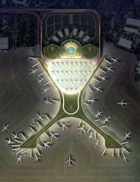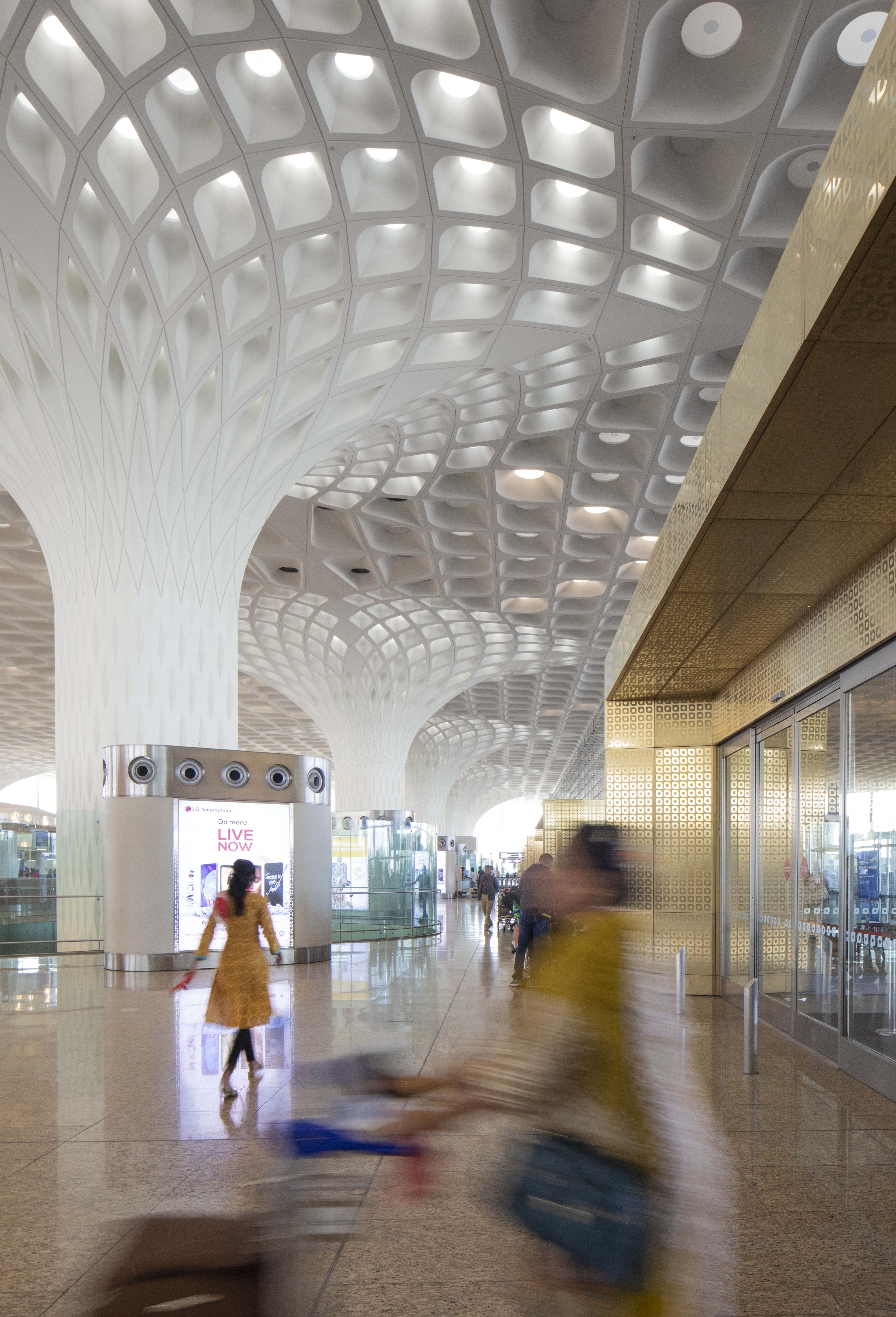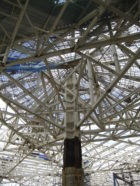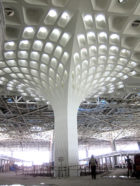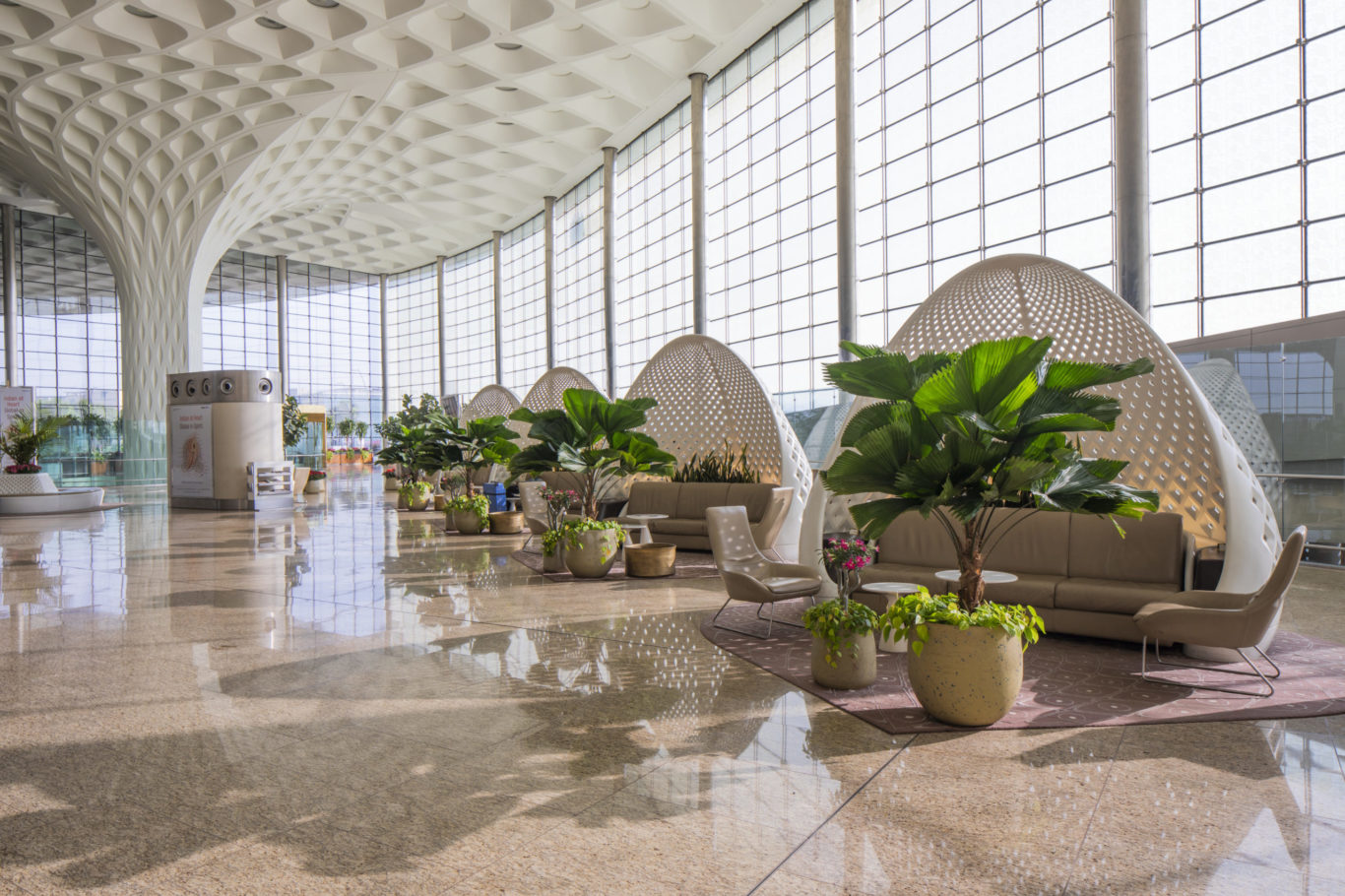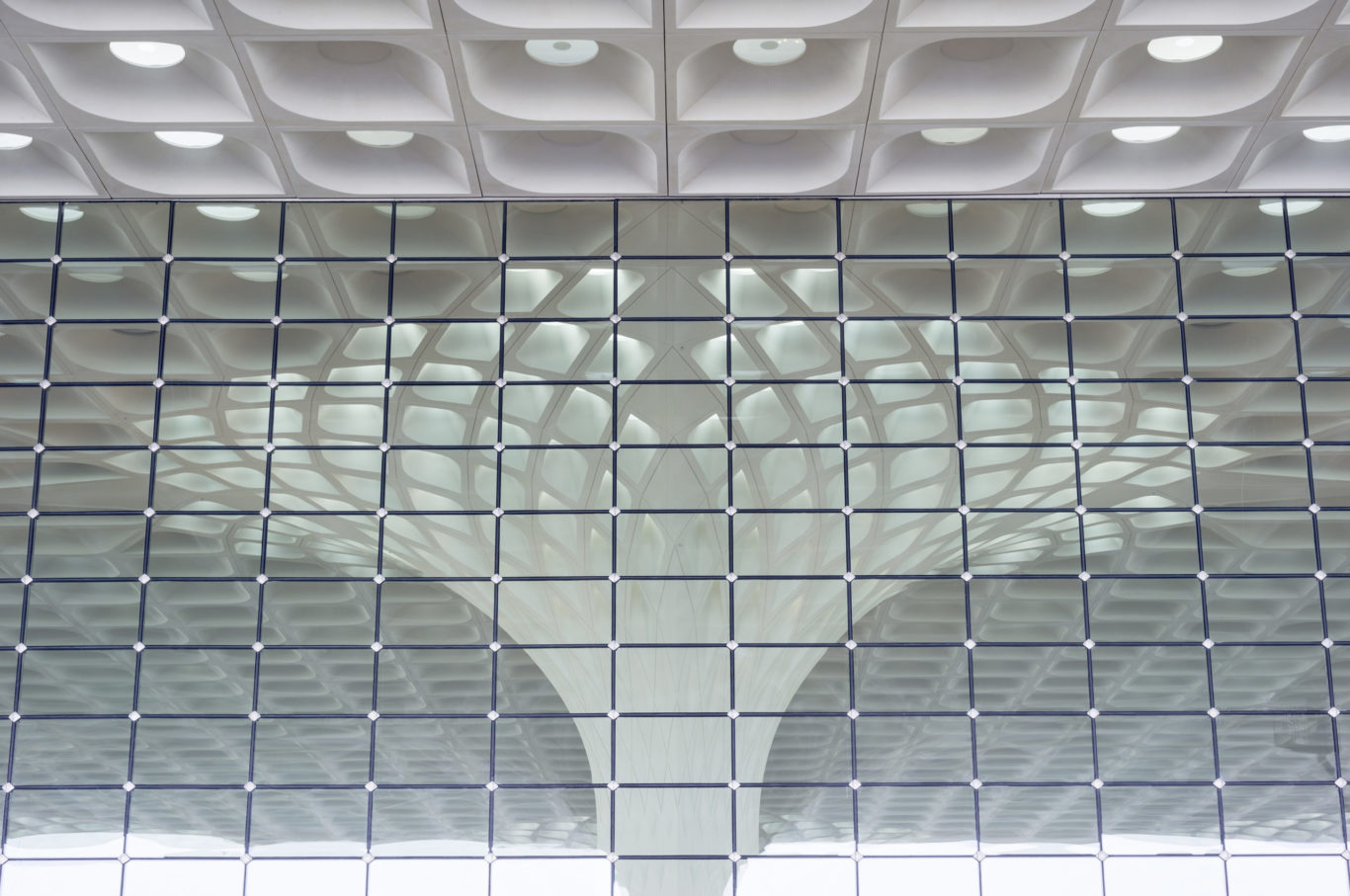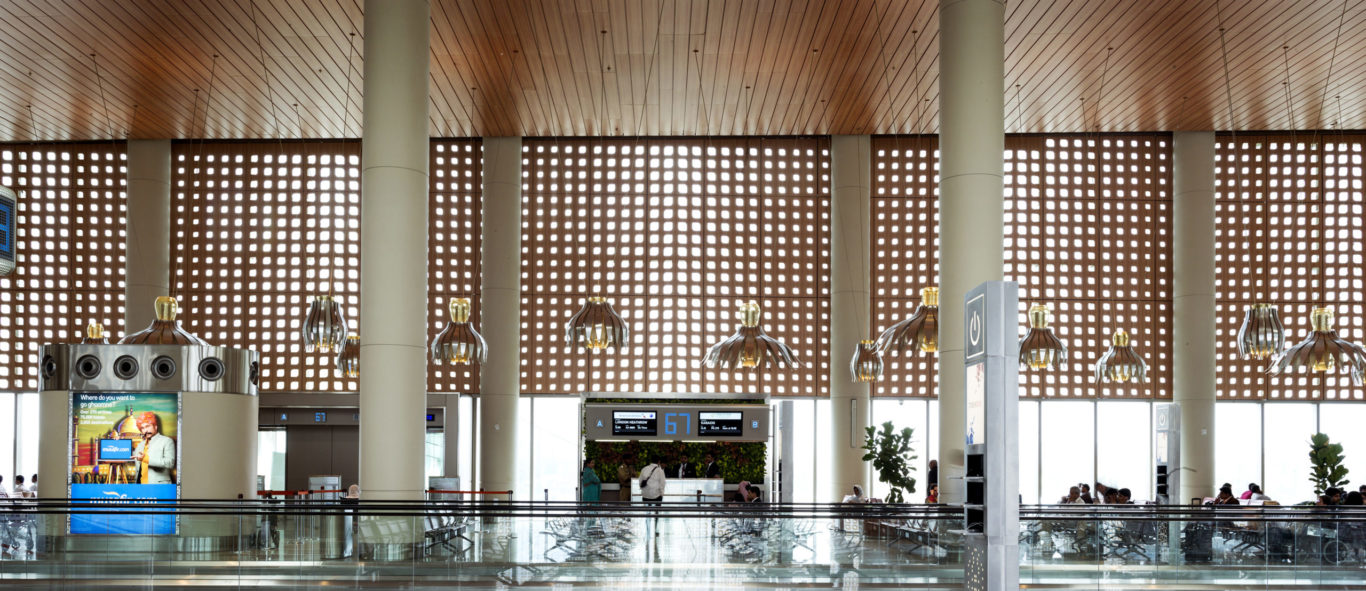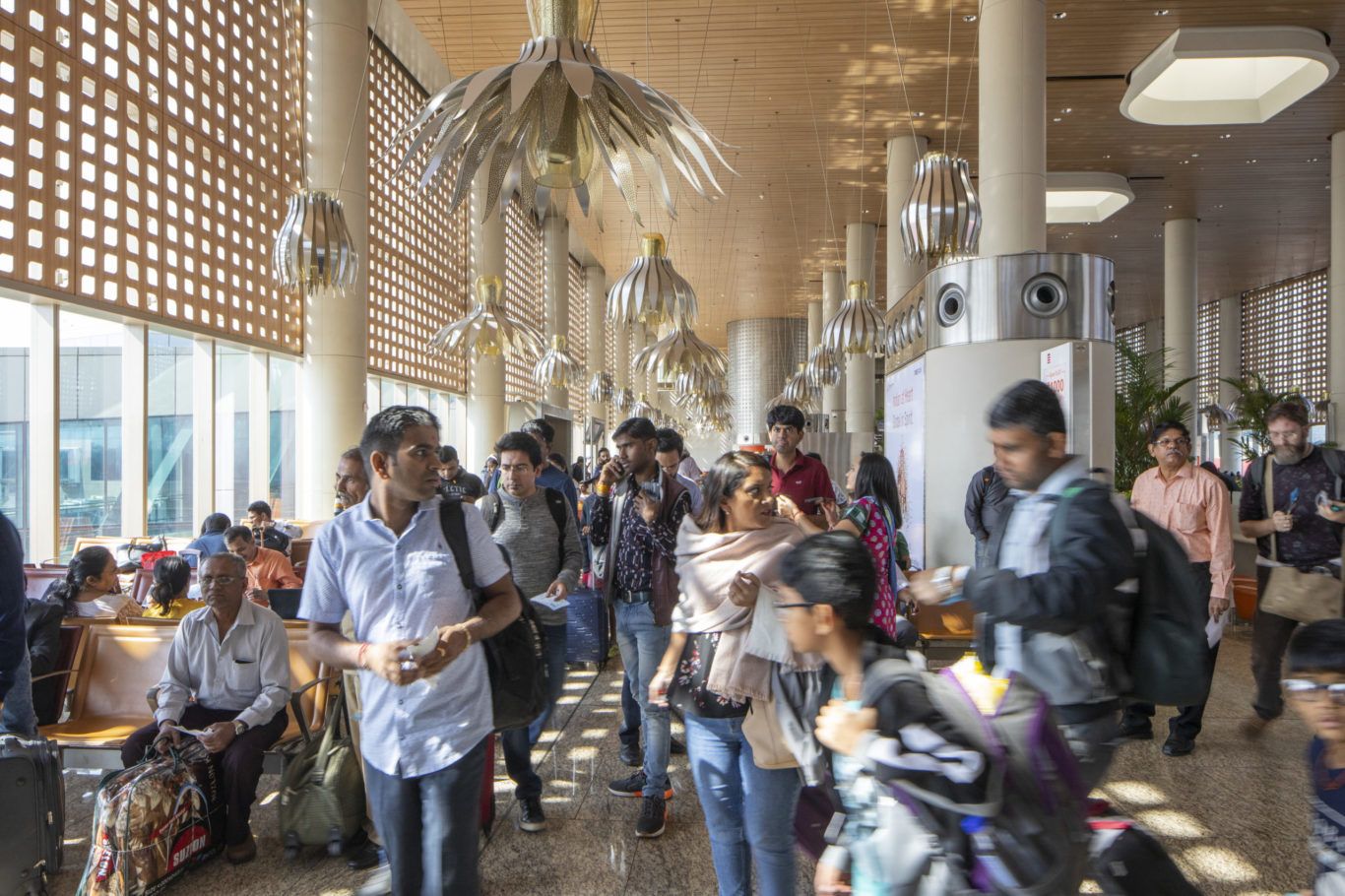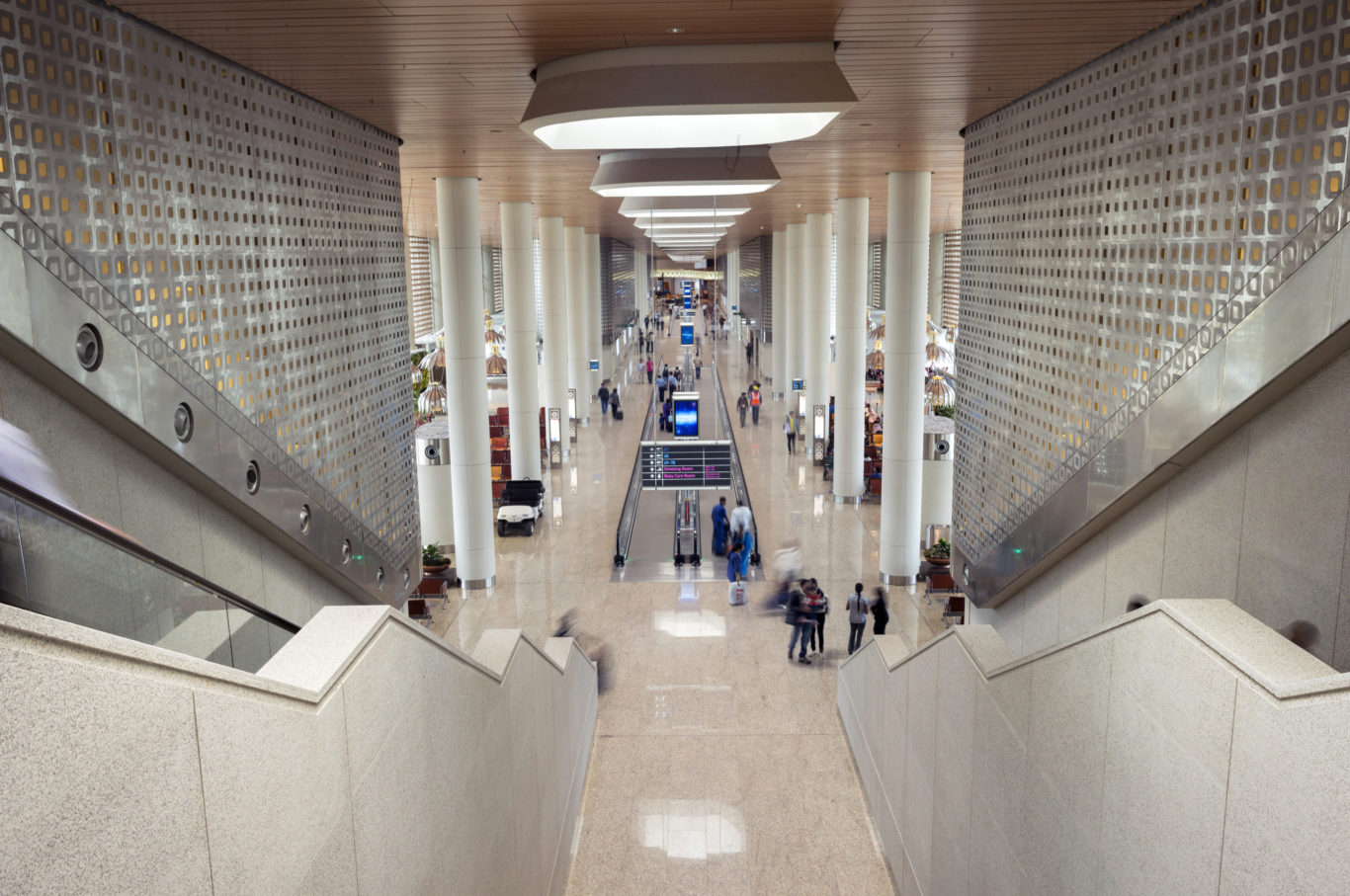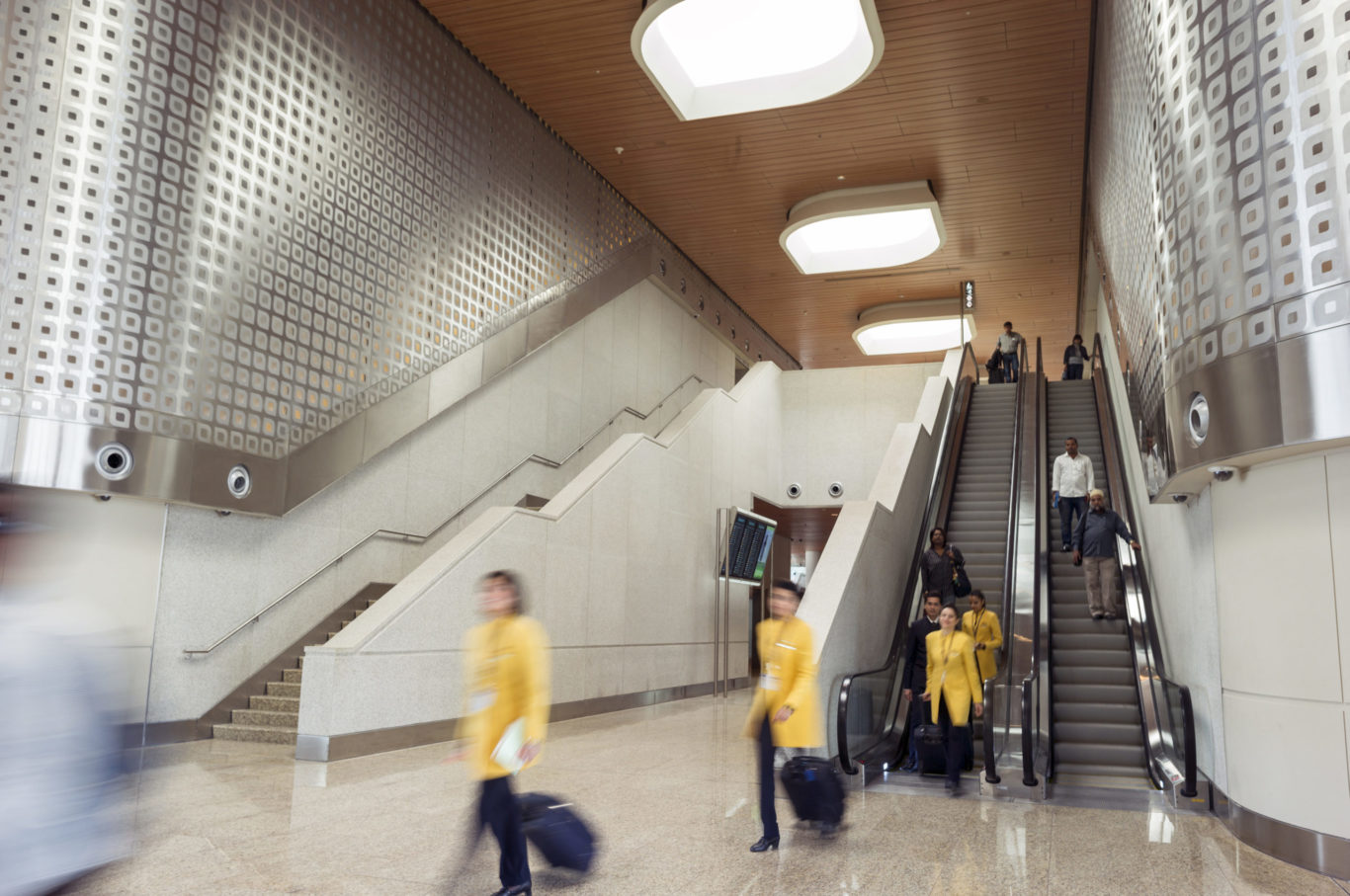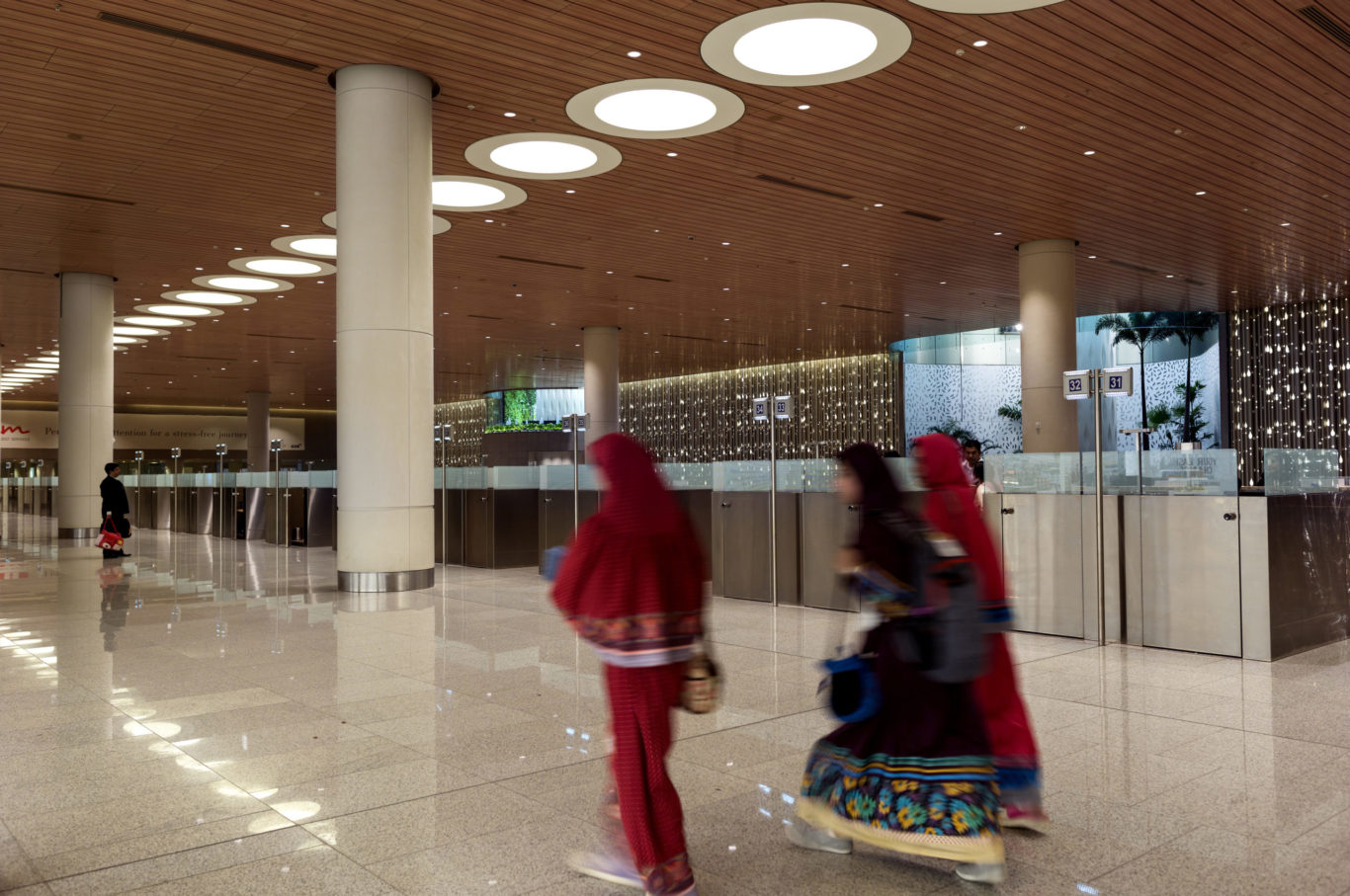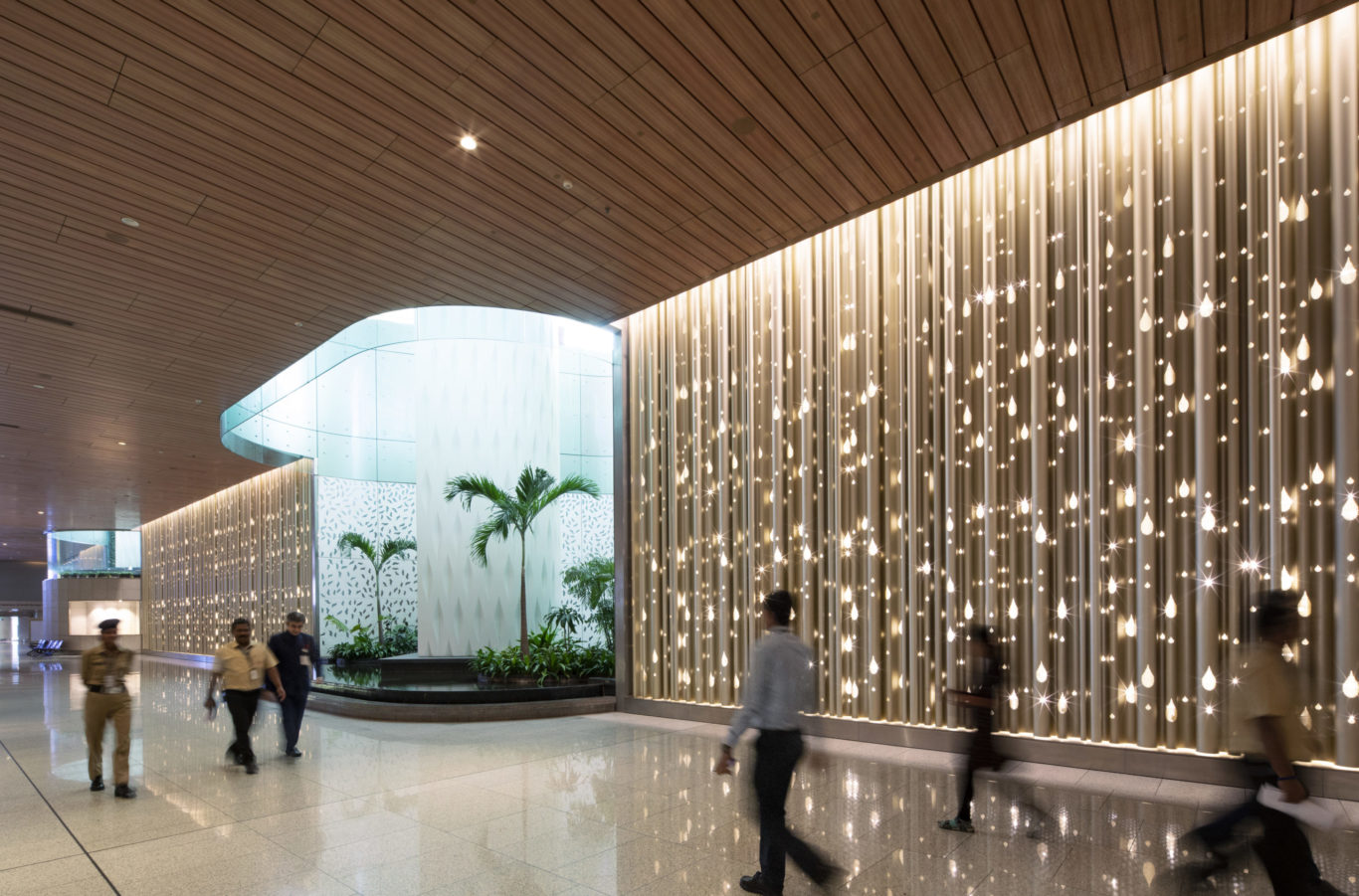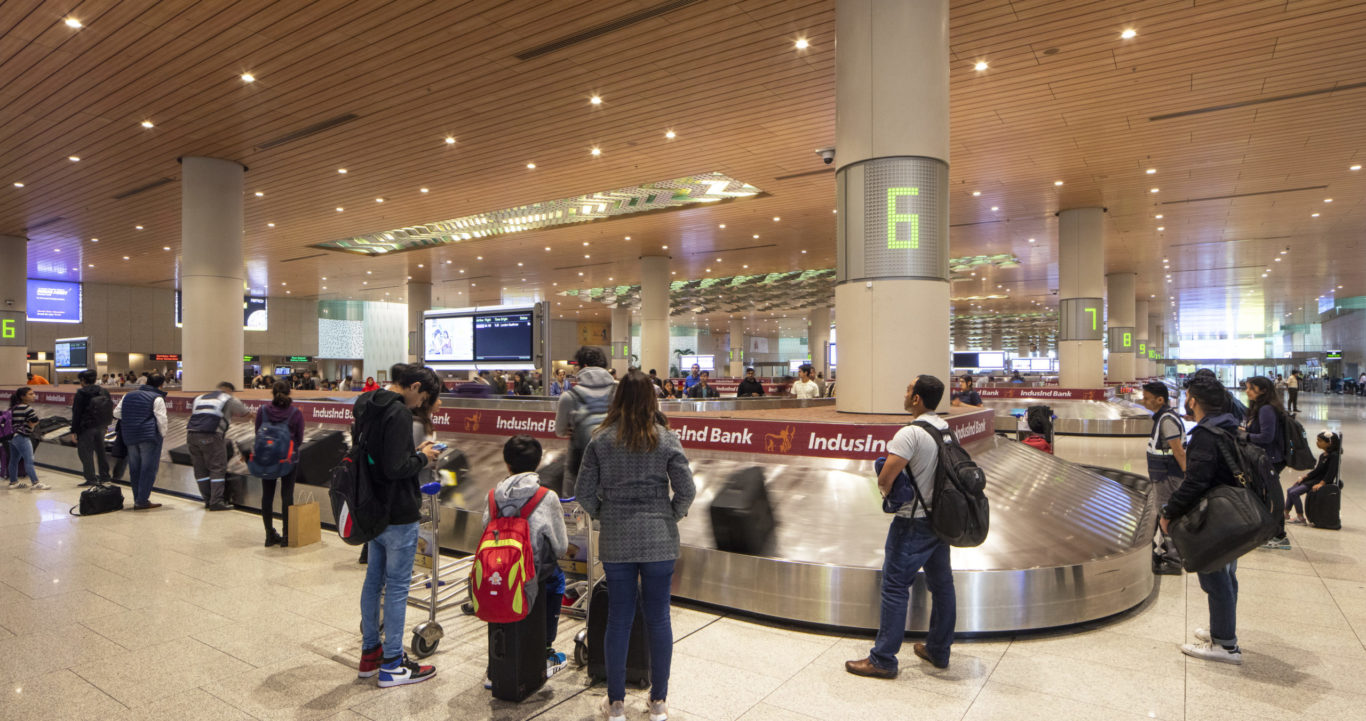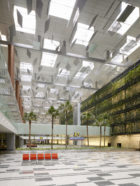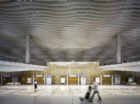Navigating complexity
Chhatrapati Shivaji International Airport’s second terminal is one of the most complex transportation projects SOM has undertaken. While the simple task was to expand Mumbai’s overcrowding airport, the larger challenge was multifarious. SOM had to triple the airport’s capacity on a site surrounded by informal settlements, an overflowing river, and immovable historical monuments — all while planning for the existing terminal to remain in operation during construction. SOM not only took on the challenge, but also envisioned a terminal that would rival the most advanced airports in the world and become a symbol of its country.

The constraints required an unconventional solution. To fit the building within the site, SOM’s integrated team of architects and engineers created a multi-story, X-shaped plan. This layout stacks various functions atop one another – saving thousands of square feet. The center of the “X” houses extensive retail and dining facilities and a massive baggage handling system. From here, the four concourses spread wide to maximize the number of aircraft gates, while leaving room for a historic settlement on one side and the Mithi River on the other. Together, all post-security facilities are designed to swing between domestic and international travel according to demand, to allow the terminal to maximize its use of space. The building was constructed in phases — as new portions opened, the previous terminal was progressively demolished to allow the airport to remain in service throughout the entire process.
